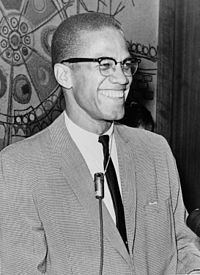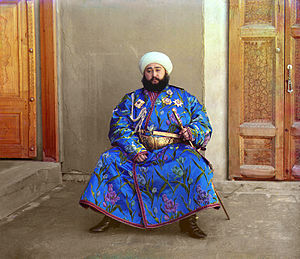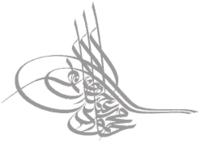Portal:Islam/Selected picture
Contents
Usage
The layout design for these subpages is at Portal:Islam/Selected picture/Layout.
- All pictures added must have been given a quality rating of Wikipedia:Featured pictures.
- Add a new Selected picture to the next available subpage.
- Update "max=" to new total for its {{Random portal component}} on the main page.
Selected pictures list
Portal:Islam/Selected picture/1
The Sixty Dome Mosque is a medieval mosque located in Bagerhat, Bangladesh, built by Muslim saint Khan Jahan Ali in mid 15th century. This unique masonry mosque with 81 domes (including 4 corner domes) is a UNESCO world heritage site.
Portal:Islam/Selected picture/2
Chechen separatist fighter praying during the First Chechen War
Portal:Islam/Selected picture/3
Tanzanians protesting the 2008-2009 Gaza bombardment
Portal:Islam/Selected picture/4
Sultan al-Atrash, (1891-1982) was a prominent Arab Druze leader, Syrian nationalist and Commander General of the Great Syrian Revolution (1925-1927).
Portal:Islam/Selected picture/5
Malcolm X (born Malcolm Little; May 19, 1925 – February 21, 1965), also known as El-Hajj Malik El-Shabazz, was an African American Muslim minister, public speaker, and human rights activist.
Portal:Islam/Selected picture/6
Saddam Hussein Abd al-Majid al-Tikriti (April 28, 1937 – December 30, 2006) was the President of Iraq from July 16, 1979 until April 9, 2003.
Portal:Islam/Selected picture/7
An early colour photograph of the Emir of Bukhara, Mohammed Alim Khan, in 1911, taken by Sergei Mikhailovich Prokudin-Gorskii as part of his work to document the Russian Empire from 1909 to 1915. Alim Khan, a direct descendant of Genghis Khan, was the last emir of the Manghit dynasty. He reigned from 1911 to 1920, fleeing to Afghanistan when the Bolsheviks annexed Bukhara and proclaimed the Bukharan People's Republic.
Portal:Islam/Selected picture/8
The Tughra (طغراء) of Mahmud II. A tughra is a Turkish paisley-like calligraphic seal or signature used at the beginning of sultans' decrees. These colorful emblems incorporated the ruler's name and title in intricate vegetal inscriptions designed by neshanis, or court calligraphers. Parallel to the European signet, tughras often appeared on coins and stamps of the Ottoman Empire.
Portal:Islam/Selected picture/9
A young woman from Ramallah, c. 1898-1914. Until the 1940s, women of Palestine wore elaborate handcrafted garments. The creation and maintenance of these items played a significant role in their lives. A knowledgeable observer could determine a woman's village of origin and social status from her clothing. The circular band near this woman's forehead is a ring of coins made from a portion of her dowry money, and indicates that she is unmarried.
Portal:Islam/Selected picture/10
Example of an ijazah, or diploma of competency in Arabic calligraphy
Portal:Islam/Selected picture/11
1905 Stereoscope. Original caption reads: The native mode of grinding coffee, Palestine.
Portal:Islam/Selected picture/12
Turkish trenches on the shores of the Dead Sea, part of the Sinai and Palestine Campaign during the Middle Eastern theatre of World War I
Portal:Islam/Selected picture/13
A Bedouin woman in Jerusalem, sometime between 1898 and 1914, dressed in Palestinian costume, the traditional clothing worn by Palestinians. Many of the handcrafted garments were richly embroidered and the creation and maintenance of these items played a significant role in the lives of the region's women. Until the 1940s, traditional Palestinian costumes reflected a woman's economic status, whether married or single, and the town or district of origin, and a knowledgeable observer could glean such information from the fabric, colors, cut, and embroidery motifs (or lack thereof) in a given woman's apparel.
Nominations
Feel free to add related featured pictures to the above list. Other pictures may be nominated here.
The Sixty Dome Mosque is a medieval mosque located in Bagerhat, Bangladesh, built by Muslim saint Khan Jahan Ali in mid 15th century. This unique masonry mosque with 81 domes (including 4 corner domes) is a UNESCO world heritage site.









